Prosciutto offer in Gligora cheese&deli stores
Dalmatian or Drniš, Istrian or Krk?
Whichever you choose - you choose top-quality prosciutto from renowned producers. All these prosciuttos have either label of a protected designation of origin (Istrian) or a protected geographical indication (Krk, Dalmatian and Drniš) and this is a kind of confirmation of uniqueness and quality!
The taste of prosciutto depends on many factors, such as the breeding and nutrition of pigs from which prosciutto is produced, then salting and additional spices, which depend on the affinities of the producers, as well as the size or weight of pig leg and their adipose tissue.
History
Prosciutto began to be produced in Croatia with the expansion of the Roman Empire by transferring the knowledge and skills of processing and salting pork. Gradually, techniques and skills are passed from generation to generation and take on specific characteristics in different areas.
Mass production began after the end of World War II, and in the '60s, with the significant development of tourism, it became an almost common food product in Croatia.
What are the basic differences in the preparation of prosciutto?
Smoking
Istrian and Krk prosciutto does not smoke.
Dalmatian prosciutto is smoked according to the producer's estimate, while Drniš prosciutto is smoked between 45 and 60 days.
Skin and adipose tissue
Istrian prosciutto removes skin and subcutaneous fat, while Krk, Dalmatian and Drniš remain.
Drying
The drying process of Dalmatian and Drniš prosciutto lasts up to 2 months, Krk prosciutto 3 months, and Istrian prosciutto between 5 and 7 months.
Maturation
Dalmatian prosciutto matures up to 12 months, Krk min. 12 months, Drniš from 12 to 18 months, Istrian up to 18 months.
Salting
Krk prosciutto is salted with a mixture of salt and black pepper, and laurel and rosemary can be added to the mixture. Istrian prosciutto is salted with a mixture of salt, black pepper, onion, bay leaf and rosemary.
Dalmatian and Drniš prosciutto are salted exclusively with sea salt.
Pressing
In Istrian and Krk pressing takes a minimum of 7 days, in Drniš and Dalmatia from 7 to 10 days.
Cutting prosciutto
It is a real science to cut prosciutto and it differs from prosciutto to prosciutto.
It is definitely recommended to cut the prosciutto with a knife, slowly and in even strokes. Machine cutting is not desirable and is impossible to do it on the whole prosciutto with bones. If it is cut mechanically, it is also necessary to cut at the lowest speed so as not to heat the prosciutto and melt the fat. Prosciutto should be cut just before consumption.
Leg weight
In the case of Krk prosciutto, the weight of fresh ham must be at least 12 kg, and the finished product at least 6.5 kg.
In the case of Istrian prosciutto, the weight of fresh ham must be at least 13 kg, and the finished product from 6 to 8 kg.
In the case of Drniš and Dalmatian prosciutto - fresh leg must weigh at least 11 kg, and the weight of the finished product is not explicitly defined.
You can find our prosciutto selection here
Photo Gallery:
prosciutto from croatia pdo prosciutto istrian prosciutto dlamacija drnis prosciutto dalmacija proscituo from dalmatia istra dalmatian prosciutto prsut prosciutto from istria krk prosciutto croatian prosciutto prosciutto drniš prosciutto pršuti pgi prosciutto pata negra
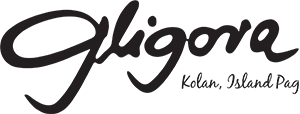
 English
English
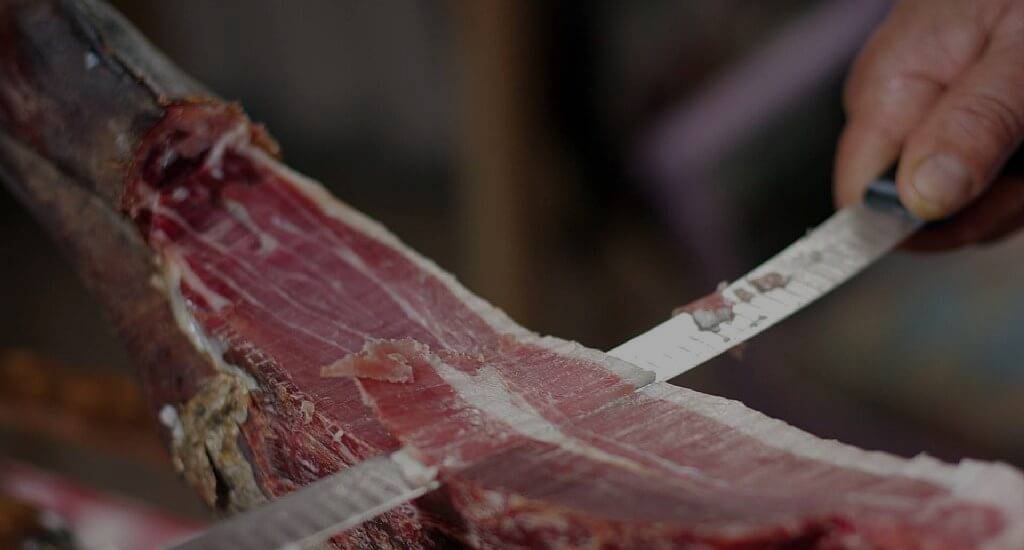

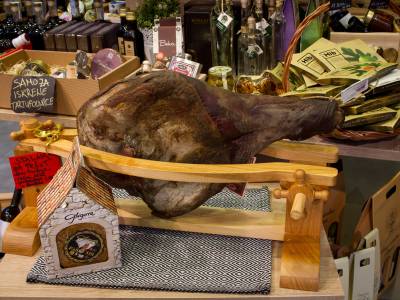
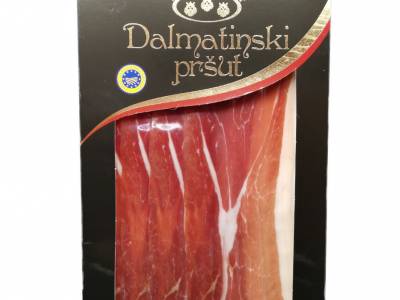

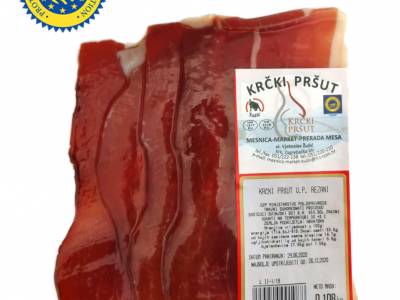



_800_800_s_c1.jpg)

